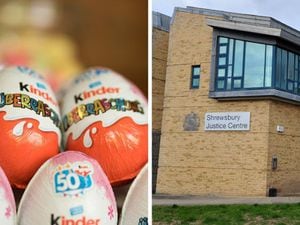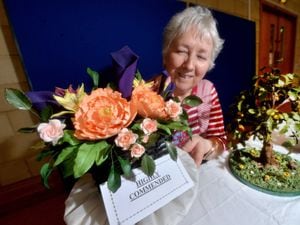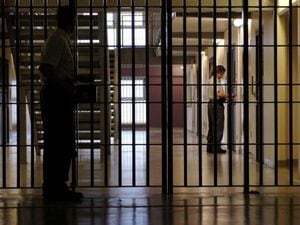Cinderloo 200 years on: The battle that helped shape Telford
A battle that sent reverberations through east Shropshire's social and industrial development has its 200th anniversary today – but you could have been forgiven for letting it pass you by.
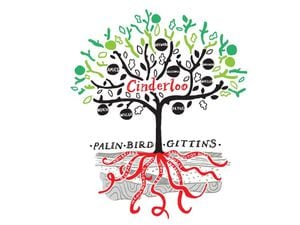
The Battle of Cinderloo shook the area that is modern day Telford, seeing downtrodden miners uniting against unfair pay and met with military resistance.
In the violence two workers were killed, a third was later hanged and eight were imprisoned – repercussions that should seemingly be famous locally; but until recently, the name Cinderloo was mostly unknown outside of those with a special interest.
One group of such specialists, The Cinderloo 1821 Project, has been working tirelessly to change that and it is thanks to their efforts in recent years that today's anniversary is met with a much wider awareness and appreciation for the area's industrial history.
On February 2, 1821, 3,000 miners, women and children marched on the cinder hills at Old Park (now the Forge Retail Park in central Telford), in protest at sudden pay cuts of 6d. Before the announcement of the cut they were already angry about unsafe conditions on the coalfields.
They were met by the Shropshire Yeomanry and told to disperse, but the protesters refused to back down and violence broke out.
For 200 years little has been known about the backgrounds and lives of those who were arrested in the riot that took place there.
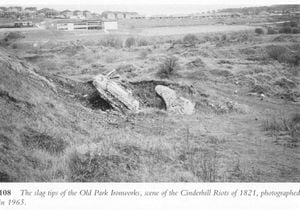
Volunteer genealogists who are part of The Cinderloo 1821 project have been researching the men, including Tom Palin, who was hanged for his role in the uprising; William Bird, who was shot by soldiers from the Shropshire Yeomanry; and Thomas Gittens, who died later from wounds he received.
Eight other men were arrested and served jail time, and all of their names have been preserved through history.
Many of them have surnames that will be familiar to people still living in the area, and The Cinderloo 1821 group is encouraging anyone who is interested to look into their own families' potential connections.
Short biographies detailing the men's births and deaths as well as their family have been published on the group’s website.
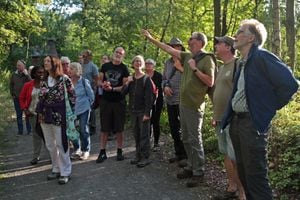
Their personal stories have never been told, but now for the first time there are details that help to understand the conditions that the men faced and impact that the events had on their families.
After the uprising, the ironmasters agreed to make a smaller pay cut of 4d – but there were long-reaching consequences from that day.
The discontent got more people talking about trade unions and about other events across the country. Like the Peterloo Massacre, which took place two years earlier in Manchester, Cinderloo was so named in ironic reference to the Battle of Waterloo.
Cinderloo was just one of the flashpoints in a kind of culture war that paved the way for the eventual legalisation of trade unions and the resulting improvements in workers' rights, pay and conditions.
Meanwhile Methodist preachers arrived in Telford from Stoke and other nearby towns, helping the working class to find comfort from their hard lives through God.
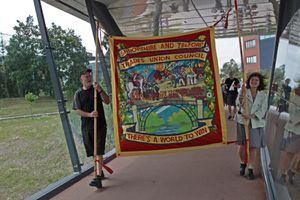
The three men who died did not have any children so the search for direct descendants has always been unsuccessful.
However, contact has now been made with a relative of Thomas Gittens who resides in America, and he has been able to assist in piecing together some of the mysteries that until now have not been resolved.
Spokesman for the group Pete Jackson is delighted that the events of that fateful day are being remembered, but they are not resting on their laurels.
Throughout the anniversary today he has been tirelessly spreading the word, and continuing work on upcoming Cinderloo projects.
The group has come a long way since being founded less than three years ago, and Pete said he was proud of all the work they had done to improve public awareness of Cinderloo.
Pete said: “Our group of family historians have worked tirelessly over the last two years to piece together the stories of the men involved, and it's brilliant that we can publish today the details of the 11 men which gives snippets of information that we are sure others will be interested in following up.
"The birthplaces and places where the men are buried is a story in its own right, and details churches and burial places that are still here today in Telford. The impact of the uprising also led to some men and their families moving to other parts of the country and abroad to seek new lives.
“We are really pleased to be able to publish this research today 200 years later which provides a tribute and recognition to people previously forgotten."
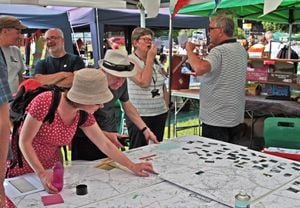
The project's website (cinderloo.com) is a fount of information and resources, including profiles of the men involved, maps showing the protesters' route, and a list of surnames associated with the men so that modern day descendants can start asking their own questions.
From October 2021, if restrictions allow, people will be able to see artwork and research at an exhibition in collaboration with Ironbridge Gorge Museum Trust at the Footprint Gallery in Coalport.

